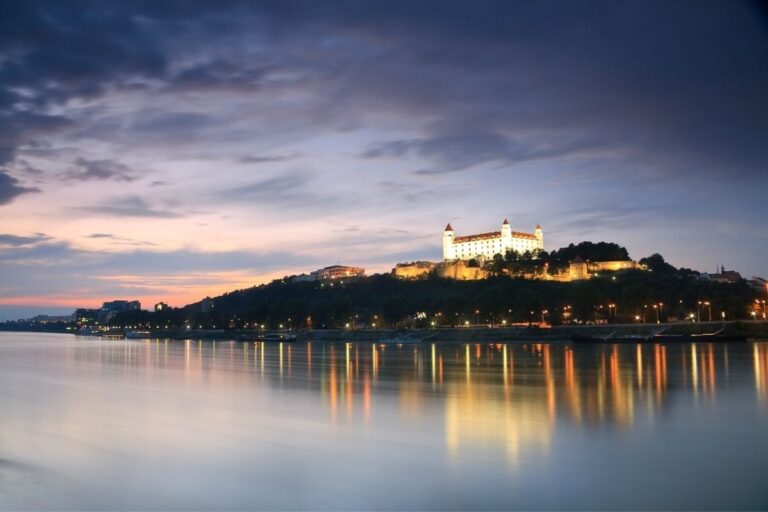
Go World Travel is reader-supported and may earn a commission from purchases made through links in this piece.
Not only is it significant in terms of history, but it is also significant in terms of size. It is the second-largest river in Europe and the only river in the world to run through as many as ten countries.
Over the past millennia, the Danube has shaped both the landscape and the people that rely on it. It serves as the boundary between many countries, territories and cities. Furthermore, it has had an incredible influence upon history. At one point, the river was even worshipped as a God.
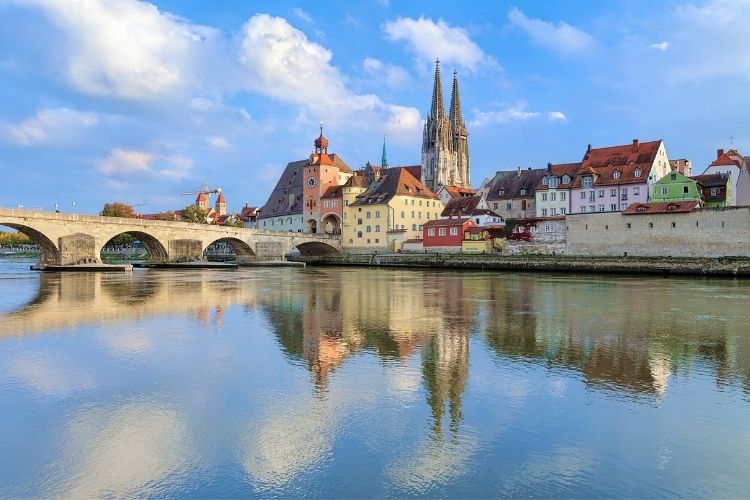
Becoming the First Person to Walk the Danube
Last year, I decided to walk the length of the Danube in order to understand more about the river and the relationship it had with the people that lived alongside it. It turned out that no one else had walked from the source of the Danube to the sea. Therefore, I became the first person to do so.
The main motivation behind a trip like this was to see what else the Danube had to offer. Of course, there is the Danube Cycle Path. However, once that ends, so does most travellers’ journey. As you may imagine, there is so much more to the river than this relatively short cycle route.
And it all started in Furtwangen, Germany.
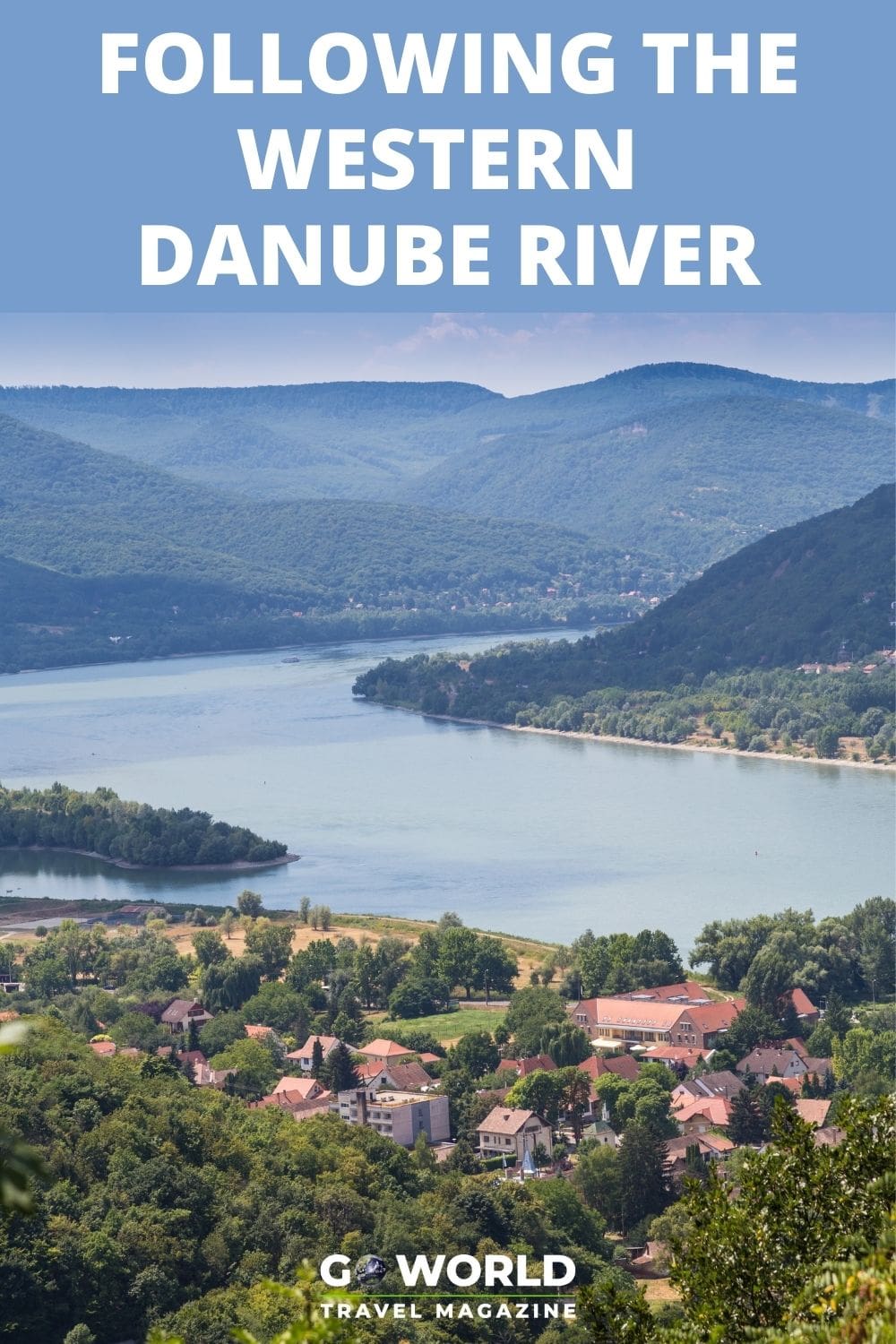
The German “Donau” – Source of the Danube
Contrary to popular belief, the Danube does not actually start in the German town of Donaueschingen. Rather, it originates several miles up in the heart of the Black Forest.
One might expect the mighty Danube River to have an equally impressive beginning. But, in reality, the start of the river is born out of nothing less than a drippy pipe.
Small enough to be easily blocked with a stone, this spring continues to flow downstream to connect with the Brigach, becoming the Danube that we all know and love.
In Furtwangen you will find a statue of the river God, Danubius, as he gazes out towards the Black Forest. In Donaueschingen, the spring rises into a small pool basin known as Donauquelle. Here a statue of Mother Baar (Germany’s great plateau) points the way for the young Danube.
From there, the river flows south to Ulm, Regensburg, Deggendorf, and Passau.
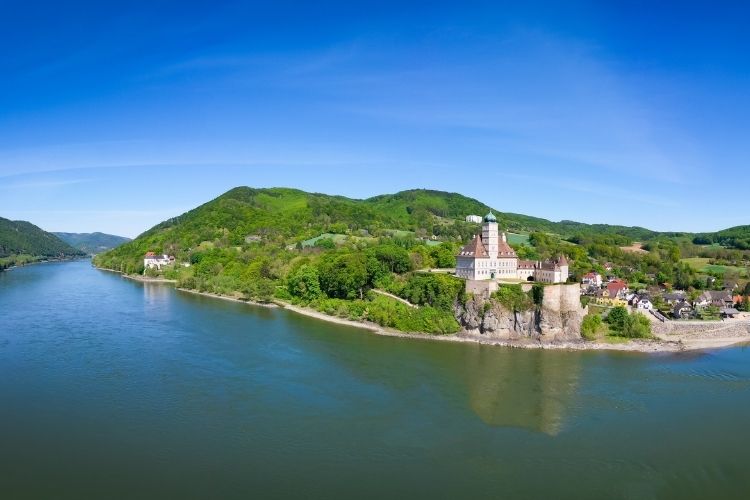
The Austrian “Donau” – the Wachau Valley
The Danube is one of the mightiest rivers in the world – and the Wachau Valley is the gem of its creation. Filled with abbeys, vineyards and fairytale cobblestoned towns, it is one of the most beautiful places along the river.
There’s the city of Melk, known for its sherbet-yellow abbey and the site of St Coloman, the first patron saint of Austria. Then there are the beautiful towns of Dürnstein and Willendorf, filled with former prisons and goddess totems, respectively.
The river continues to wind its way to Vienna, where a local legend still thrives. It is said that long ago, fishermen would often gather by the Danube to mend their nets.
One day, an older fisherman was telling a younger man the story of the Danube Prince, who lived with his children in a green glass palace at the bottom of the river.
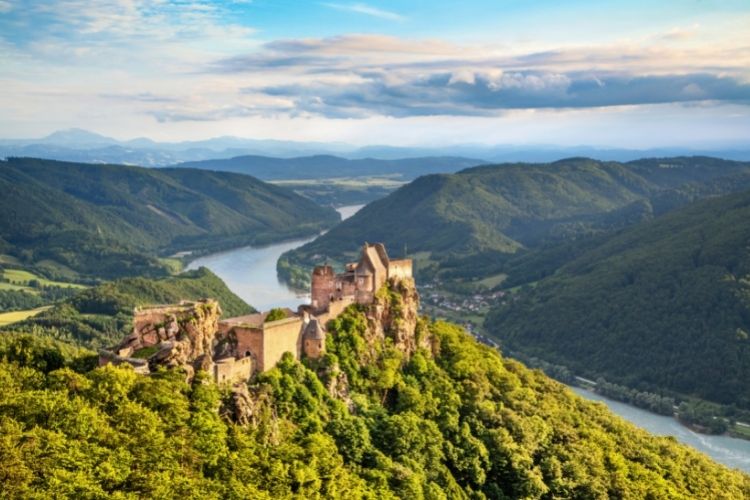
Local Legend
Whilst beautiful, the Prince was also cruel. He would walk the banks of the Danube disguised as a hunter to drag unsuspecting fishermen into the depths of its rivers.
He would then keep their souls in upturned jars, eternally holding them prisoner. Sometimes, however, the souls would escape, and the living fishermen were haunted by their singing and dancing as they mended their nets.
Suddenly, the area lit up and a beautiful mermaid appeared before the older and younger fishermen. She warned them that the mountains were soon going to thaw and a flood would rush down the Danube, destroying their houses.
Then, she disappeared. The fisherman ran to tell the others. Subsequently, by the time the flood came, they were safely away.
But that wasn’t the end of it. The young fisherman was so awe-struck by the beautiful mermaid that one day, he took out the fishing boat and rowed it into the middle of the river.
He was never seen again. The older fisherman found the boat washed up on the shore, empty. He would spend the rest of his life asking himself, was it the Danube Prince or the mermaid that had taken him? Or… was it the river itself?
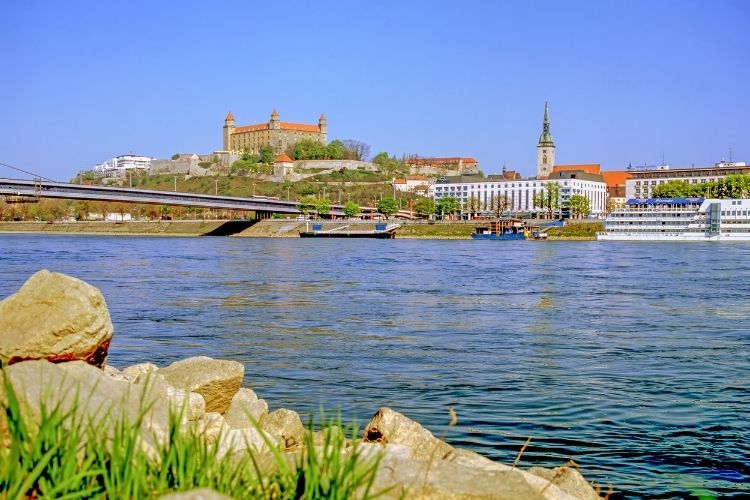
The Slovakian “Dunaj”
The Danube spends only a short time in Slovakia, but that time is significant.
The river has been especially important to Bratislava, serving as a border between the Roman Empire and the barbaric Germanic tribes. Later, it proved a great help in protecting the city from the Tartars and the Turks.
The border between Austria and Slovakia becomes especially clear from atop Bratislava’s Devín Castle, where the Danube meets the Morava river. You can just make out where history left its mark.
When the Iron Curtain was built to separate the Eastern Block from the West in 1948, the area was surrounded by barbed wires and guarded by border security. Over 400 people died as they tried to escape.
Now, a Memorial Arch pays tribute to these people, as a constant reminder. Whilst over time, people may forget, the river will not.
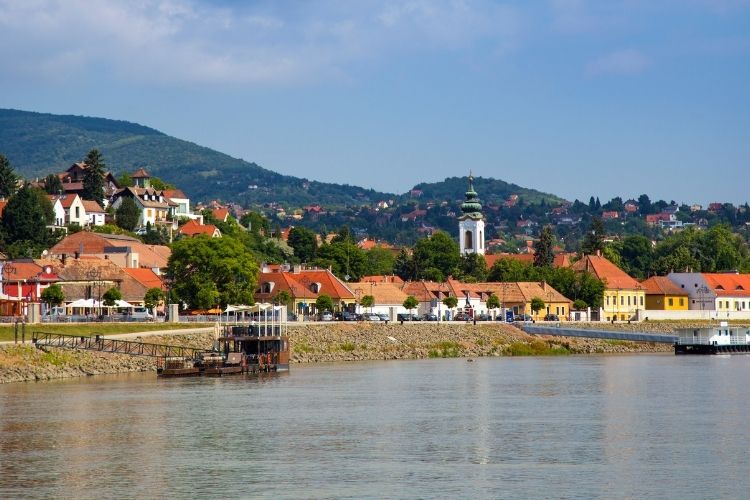
The Hungarian “Duna”
The Hungarian Danube seems to be split into two parts: the northern Danube and the southern Danube. Both sides have entirely different ways of life, traditions and charms. The cosmopolitan north being a direct contrast to the more rural south.
Crossing over from Slovakia, the first large town in Hungary is Győr. This is a very pretty area filled with cobblestoned streets and rustic tea rooms. Subsequently, it is a great introduction to the Hungarian Danube.
The river then flows through three incredibly influential cities and towns: Esztergom, Szentendre and Visegrád. Esztergom has been the seat of Roman Catholicism in Hungary for more than a thousand years, with an impressive basilica to match.
Conversely, Szentendre is filled with Serbian orthodox churches with signs written in Cyrillic. These are left over from Serbian and Dalmatian immigrants who fled Ottoman Turkey in the 17th century.
Visegrád is home to the Danube Bend, also known as “Dunakanyar”. This is where the river stops flowing east and instead begins to flow south into Budapest.
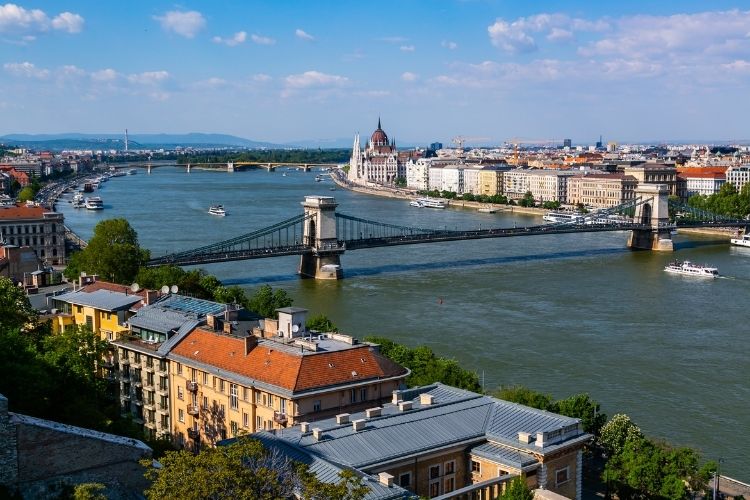
Beautiful Budapest
Budapest is known for many different things: geothermal spas, subterranean caverns, the largest synagogue in Europe, an inherent love for paprika and Islam’s north-most holy place.
With nothing but the Danube standing between Buda and Pest, it is an iconic capital that has been entirely changed by the river.
From there, the Danube flows south into the second half of the Hungarian Danube. It passes the small town of Paks, which houses the first and only operating nuclear power station in Hungary. Then, it winds through farmland, Native American-inspired ranches and endless fields of crops.
Finally, the river weaves all the way down to Mohács, a small town in southern Hungary known for its Busó festival. This is where the locals celebrate the end of winter by throwing a large party and wearing frightening wooden masks and big woolly cloaks.
Some say that the origin of this festival was to scare off the Ottomans.
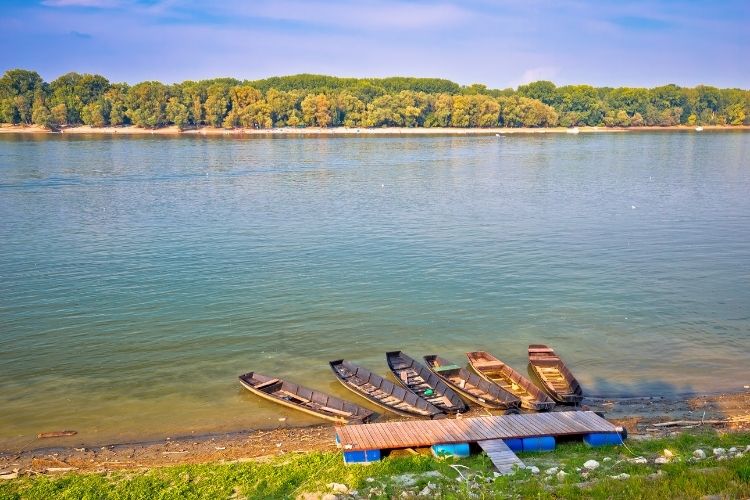
The Croatian “Dunav”
The Croatian section of the Danube starts with a nature reserve and ends having only passed through one main city.
Vukovar is a city born from multiple influences. First, the Romans visited the area and brought with them improved agriculture and viticulture. Following this, Avar and Slavic tribes began to flood to Vukovar, followed by the Hungarians, the Ottomans and the Habsburg Monarchy. Finally, the city was influenced greatly by the German counts of Eltz.
It seemed as though Vukovar was on its way to becoming one of the most influential cities in the country – but then the 1991 massacre happened.
Over 5,000 Croatian prisoners of war and civilians were killed by the Yugoslav People’s Army. Previously, the city had a bustling mixed community of Croats, Serbs and other ethnic groups. However, in the aftermath, Croatia’s president encouraged nationalism.
During the massacre, Vukovar had only 1,800 lightly armed soldiers and volunteers against 36,000 JNA soldiers and Serb paramilitaries with heavy armour and artillery. It was no surprise that the city and its people suffered greatly over the following years.
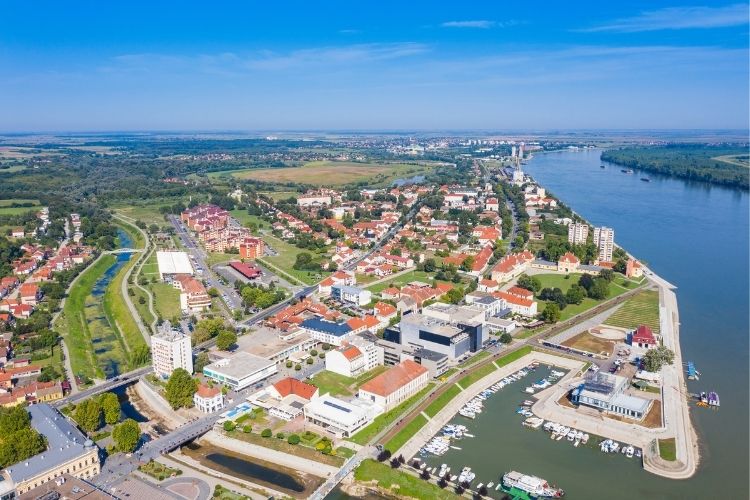
Vukovar Today
Despite its turbulent history, Vukovar has rebuilt itself as a beautiful baroque city. Features include a large public crucifix, a small shopping centre and the old water tower, eternally filled with bullet holes.
Now, whilst the majority of issues between Croatia and Serbia have been settled, there is still one case that is bound to stay active for a while: the border dispute along the Danube.
This dispute has existed between the two countries since the dissolution of Yugoslavia in 1992. Unfortunately, the unsolved argument of where each country’s section of the water starts and ends leaves a river boundary that is completely unsolved.
Ironically, it is between this boundary that the two cultures seem to intertwine, with their differences not seeming so considerate after all.
Author Bio: Amy Aed is a freelance adventurer that loves to write raw, off-the-beaten-track guides to gorgeous places.

